PioneerChicks
Naturalist
I've lost three chickens to poor ventilation this year already, because of a small draft between two windows. However, I blocked those drafts and the windows shouldn't be a problem anymore.
But I don't want to lose anymore. We didn't have any problems with this coop last year but we are now. My dad is wondering if we should fill in the cracks on the sides of the coop for the winter. Let me tell you the details. It's hard to explain so bear with me.
This coop/shed is a big wooden box, and we separated it into half to make it a coop and chicken shed. The roof is slanted, it's taller on the shed side.
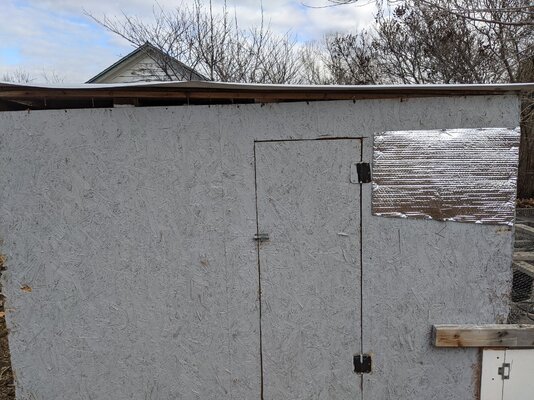
Front of coop/shed
The front of the coop has the human door (opening into the coop) and a small window. The door has a small crack in one side but that shouldn't be a problem. The back side has a bigger window. (Both windows are covered now).
The right side has a pop door for the chickens that we leave open full time. (We close the run door outside to keep predators out) The left side is the chicken shed.
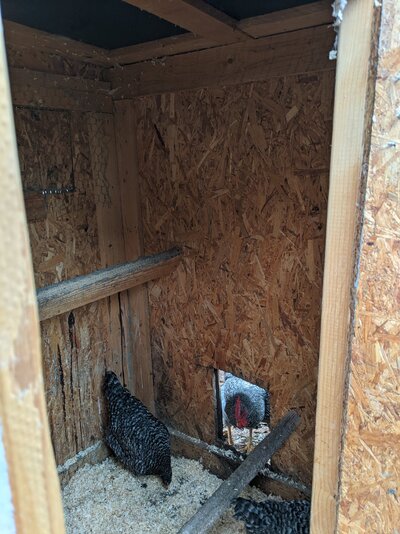
Right side of coop with pop door
The coop ventilation cracks (all are at the top of the coop) consist of the cracks on the front and back of the coop and a two-inch gap on the whole left side that connects to the shed. The shed has lots of cracks and gaps to the the air out. Don't forget that the pop hole is open all night too.
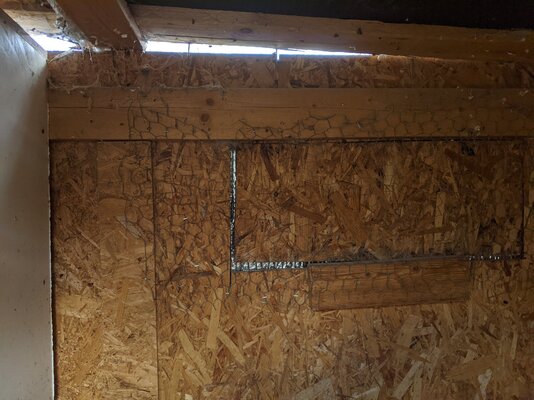
Crack on the back side of the coop (identical to front side)
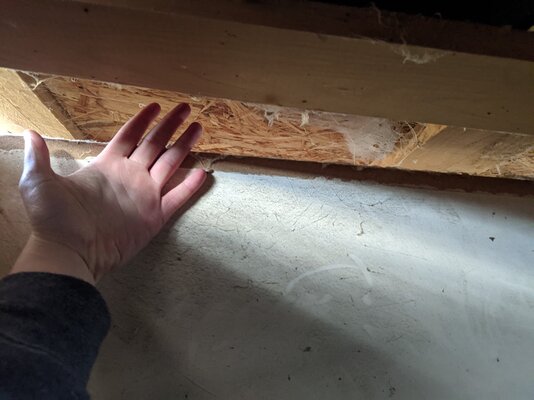
2-inch gap that stretches along the whole right side of the coop, leads into the shed
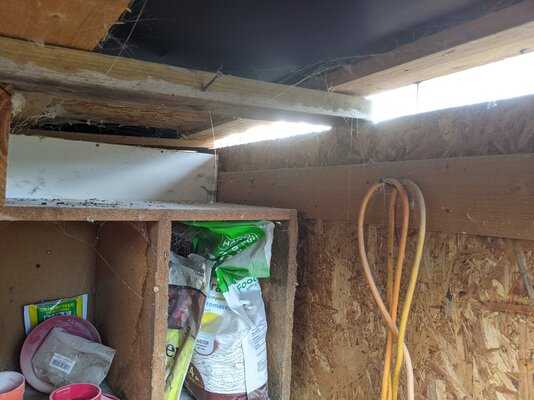
Showing some ventilation a corner of the shed. The gap above the shelf is where it connects to the coop
For mesurements and more pics you can look in my article for this coop. I think it's called The Chick Coop. Please let me know if I should clarify anything or take more pics.
My dad wants to stuff the cracks on the front and back of the coop with rags or something. This will leave only the gap into the shed for proper ventilation. Will this let enough moisture out? Or should we just leave it how it is?
But I don't want to lose anymore. We didn't have any problems with this coop last year but we are now. My dad is wondering if we should fill in the cracks on the sides of the coop for the winter. Let me tell you the details. It's hard to explain so bear with me.
This coop/shed is a big wooden box, and we separated it into half to make it a coop and chicken shed. The roof is slanted, it's taller on the shed side.

Front of coop/shed
The front of the coop has the human door (opening into the coop) and a small window. The door has a small crack in one side but that shouldn't be a problem. The back side has a bigger window. (Both windows are covered now).
The right side has a pop door for the chickens that we leave open full time. (We close the run door outside to keep predators out) The left side is the chicken shed.

Right side of coop with pop door
The coop ventilation cracks (all are at the top of the coop) consist of the cracks on the front and back of the coop and a two-inch gap on the whole left side that connects to the shed. The shed has lots of cracks and gaps to the the air out. Don't forget that the pop hole is open all night too.

Crack on the back side of the coop (identical to front side)

2-inch gap that stretches along the whole right side of the coop, leads into the shed

Showing some ventilation a corner of the shed. The gap above the shelf is where it connects to the coop
For mesurements and more pics you can look in my article for this coop. I think it's called The Chick Coop. Please let me know if I should clarify anything or take more pics.
My dad wants to stuff the cracks on the front and back of the coop with rags or something. This will leave only the gap into the shed for proper ventilation. Will this let enough moisture out? Or should we just leave it how it is?



